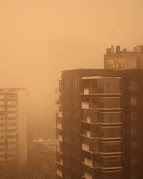Why dust storms have become more frequent
Understanding causes and effects
Dust storms are a natural phenomenon that has existed for centuries. However, recently they have become more and more frequent. This is due to a combination of factors including climate change, drought and land degradation.
What are dust storms?
Dust storms occur when strong winds raise dust and sand from the ground. These particles can be carried hundreds of miles and can reduce visibility to almost zero. Dust storms can also have a significant impact on air quality, causing respiratory and other health problems.
What are the causes of dust storms?
There are a number of factors that can contribute to dust storms, including:
Climate change: Climate change is leading to more extreme weather events, including droughts. Droughts can dry out the soil, making it more susceptible to wind erosion.
Drought: Drought is one of the main causes of dust storms. When the soil is dry, it is more easily picked up by the wind.
Land degradation. Land degradation, such as deforestation and overgrazing, can also make soil more susceptible to wind erosion.
What are the consequences of dust storms?
Dust storms can have a number of negative consequences, including:
Reduced Visibility: Dust storms can reduce visibility to near zero, which can lead to accidents.
Respiratory problems: Dust storms can cause respiratory problems such as asthma and bronchitis.
Other health problems: Dust storms can also cause other health problems, such as eye irritation and skin problems.
Impact on agriculture: Dust storms can damage crops and reduce yields.
Economic impact: Dust storms can also have significant economic impacts, disrupting transportation and tourism.
What can be done to reduce the number of dust storms?
There are a number of things you can do to reduce dust storms, including:
Tackling climate change: Tackling climate change is essential to reducing the frequency and intensity of dust storms. These are, in particular, the reduction of greenhouse gas emissions and investments in renewable energy sources.
Promoting sustainable land management practices: Sustainable land management practices such as reforestation and rotational grazing can help reduce land degradation and make soil less susceptible to wind erosion.
Improving early warning systems: Early warning systems can help people prepare for dust storms and take steps to protect themselves from health consequences.
Which country was most affected by dust storms?
China suffered the most from dust storms. The country experiences an average of 138 dust storms per year. These storms have a significant impact on the economy and health of the country.
What do experts say about dust storms?
Experts warn that due to climate change, dust storms are becoming more frequent and severe. They call for urgent action to address the problem, including reducing greenhouse gas emissions and promoting sustainable land management practices.
Working together, we can reduce the frequency and severity of dust storms and protect our planet.
Please let me know if you have any other questions.




Comments
Post a Comment